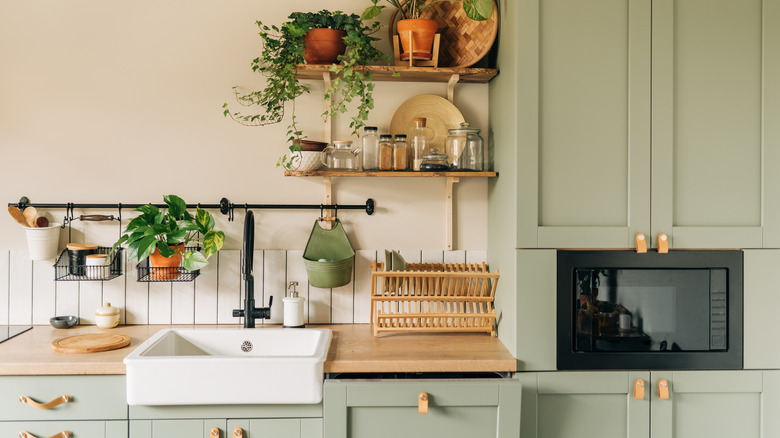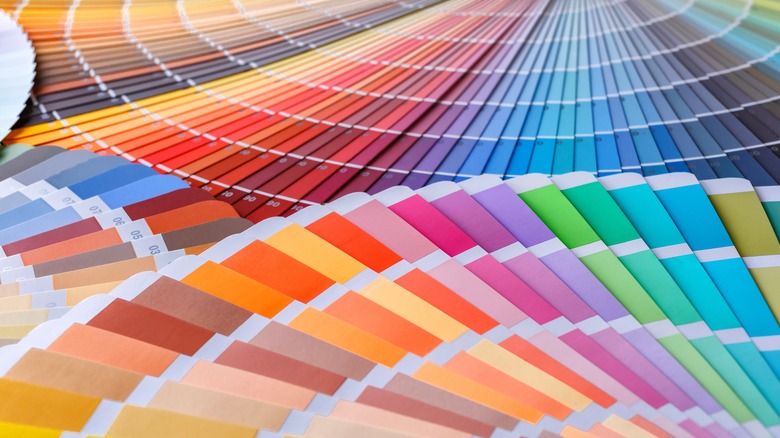How To Design A Classic Tri-Color Kitchen That Feels Balanced
They say good things come in threes, and we think that includes paint colors. Choosing the right palette for your home can be the single most important and intimidating part of a home remodel. Especially in rooms you spend a lot of time in, like your kitchen. How are you ever supposed to narrow it down? The good news is, you don't have to, because using multiple colors has plenty of design benefits — like adding dimension and contrast to your space, evoking certain moods, and tying different rooms in your home together.
Knowing how to incorporate multiple colors in the same room effectively can be hard, and that's especially true in your kitchen. Kitchens have a lot of crevices, smaller walls, and cabinets that create various different canvases to play with, which is both fun and challenging. So how do you design a tri-color kitchen that feels balanced? It doesn't matter if you prefer neutral hues or are willing to take some risks with bolder and brighter colors, using unique kitchen color combinations is a great way to add character to your room and individualize any style to your particular taste. While there are plenty of good color combos for two-tone kitchens, let's talk about how to add a third hue and make your space even more interesting.
Choosing the perfect color trio
We recommend finding inspiration that'll help you focus on colors that fit your style. You can find this inspiration from interior design websites and other home decor boards, or even just pull from what is already in your home. Maybe you have an art piece hanging on your wall that can give you a starting point. Once you choose your three colors, designate them into categories: a main color that should take up about 60% of your room, a secondary color that should be used in 30% of the room, and an accent color that should only take up 10% of the room. While you can play with these percentages, this is a good rule of thumb and will help provide necessary balance to your color scheme.
For color combinations that go well together, designer recommendations include using the darkest color for your kitchen cabinets — this will help them pop while adding the dimension that multi-colored kitchens are praised for. Using a lighter color on your walls will also provide a lot of contrast to your space that breaks up the room in a visually appealing way. For the third color, consider using natural wood in a neutral kitchen or playing with a bright, unexpected hue for a bolder approach. This can also be done by incorporating an accent furniture piece like a brightly painted cabinet or kitchen island. If you're still stuck, you can try finding your perfect color palette using the color wheel.

